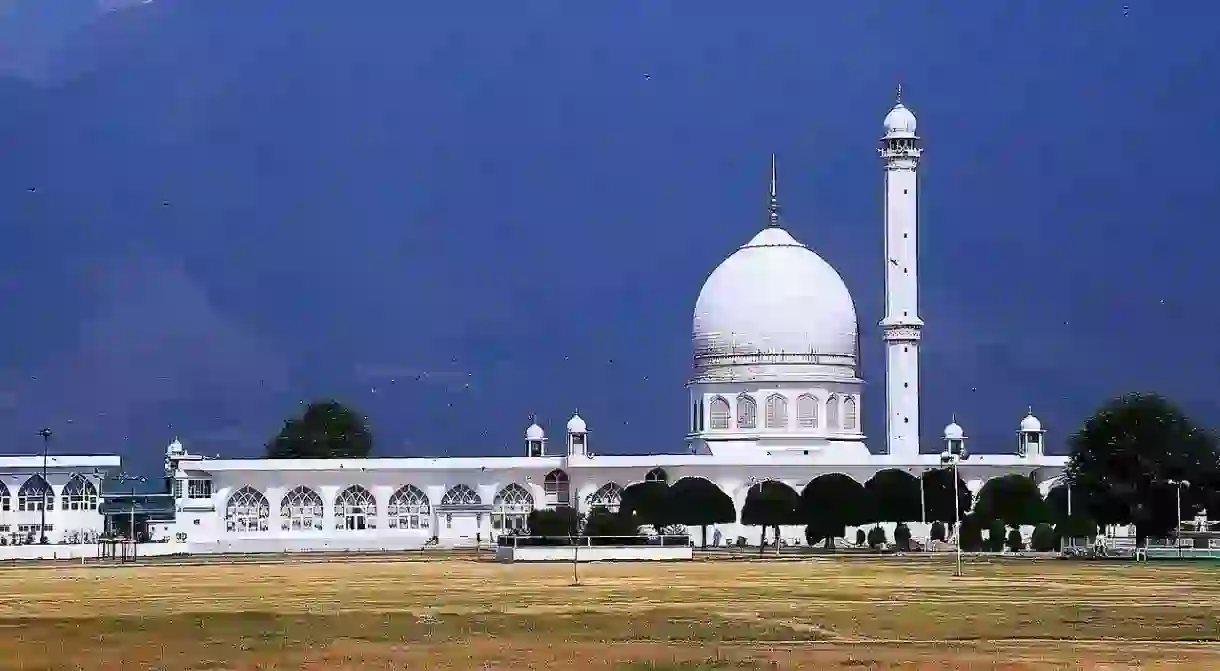The Most Beautiful Mosques You Should Visit In India

India is home to a number of breathtaking sites, as well as quite a few historic mosques, which feature impressive architectural design and exceptionally stunning decoration. From Kashmir to Kerala, we take a look at some of the most beautiful mosques that are worth visiting when traveling around India.
Hazratbal Masjid, Jammu and Kashmir
Mosque, Shrine
This pristine, white marble mosque (masjid) on the banks of the Dal lake in Srinagar is famous for containing a relic, the Moi-e-Muqaddas, believed by many followers to be a hair of Islamic Prophet Muhammad. The mosque’s name is derived from the Urdu word hazrat, which means ‘respected’ and the Kashmiri word bal, which means ‘place.’ It is considered to be the state of Jammu and Kashmir’s holiest shrine. Built in the 20th century, the mosque has a remarkable location, surrounded by the mountains of Kashmir and a spectacular view of the iconic Dal lake.
Jamali-Kamali, Delhi
Mosque, Park
Constructed in 1528-1529 CE, this mosque – built in red sandstone with marble embellishments and located just 16 kilometers from New Delhi – is considered to be a precursor to the Mughal-style mosque architecture found across India. The mosque has an adjoining tomb of two persons, named Jamali and Kamali, of which the former is the alias given to Shaikh Jamali Kamboh, a renowned Sufi saint who lived during the pre-Mughal period. While Kamali remains an unknown person, the mosque and tomb came to be named Jamali-Kamali, as both are buried together at the location.
Cheraman Juma Masjid, Kerala
Mosque
Dating back to 629 CE, this mosque in Kerala is considered to be the first in India. Built by the Arab Malik Deenar – who is considered to be a contemporary of Prophet Muhammad, and a propagator of Islam in the subcontinent – this ancient structure has been renovated many times over the years. Its first renovation dates to the 11th century CE, however it remains an active place of worship and intrigue for Muslims and non-Muslims alike. Along with its distinct Kerala-style architecture, the landmark mosque also contains an ancient oil lamp which is considered to have been burning continuously for more than a thousand years.
Taj-ul-Masajid, Madhya Pradesh
Mosque
India’s largest mosque, with interiors spanning about 430,000 square feet, this mosque in Bhopal, Madhya Pradesh has a name that literally translates to ‘crown among mosques.’ This 19th-century mosque features an iconic pink facade, topped by two 18-storey high towers with marble domes, and is located by a lake known as Motia Talab.
Nagina Masjid, Uttar Pradesh
Mosque
Also known as the Gem Mosque, or the Jewel Mosque, the Nagina Masjid is located within the UNESCO World Heritage Site Agra Fort – which had once been the imperial residence of the Mughal Dynasty. Built in pure white marble and featuring simple architecture, this elegant mosque was built by Mughal emperor Shah Jahan between 1631 and 1640 CE.
Jama Masjid, Delhi
Bazaar
One of the largest mosques in the country, the Jama Masjid in Delhi was built by Mughal emperor Shah Jahan between 1644 and 1656 CE. With three great gates, four towers, two iconic 40-meter high minarets made of red sandstone and white marble, and a large courtyard that can accommodate more than 25,000 persons, this is among the most recognized and popular mosques in the subcontinent.













